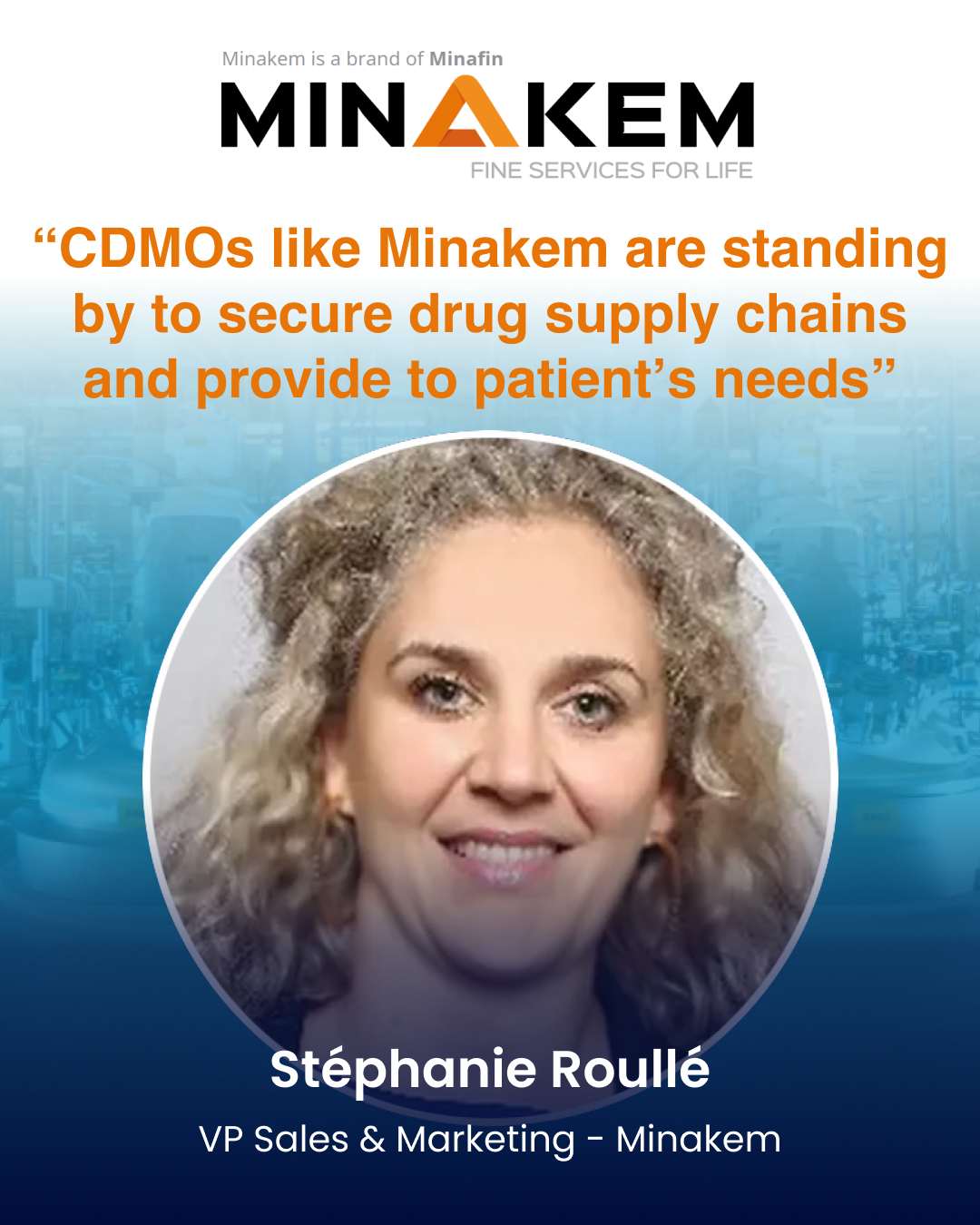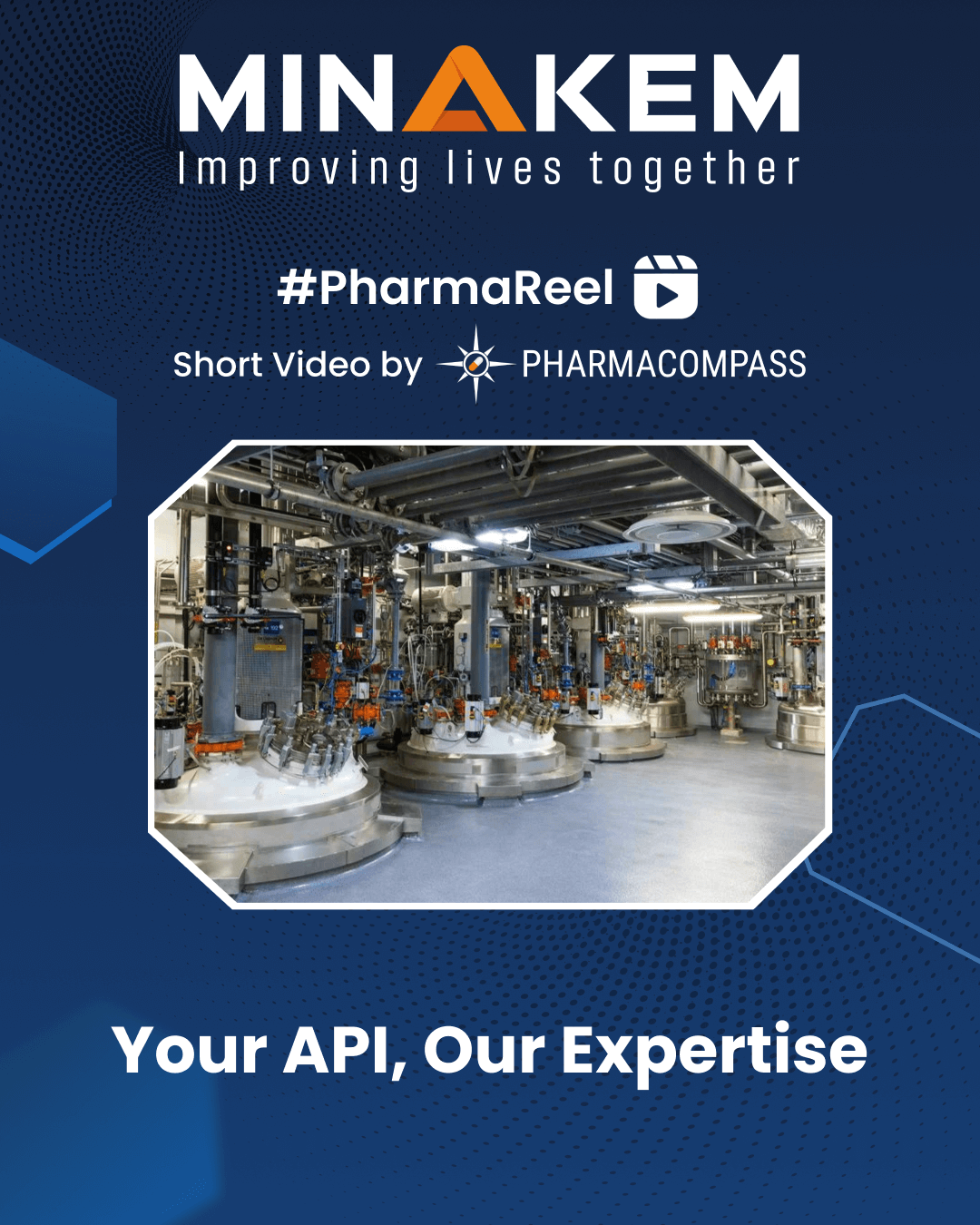
#Interview with Chemistry Today
2021-05-06
Impressions: 3621
In a panel discussion on custom synthesis and contract manufacturing, panelist Stéphanie Roullé, VP Sales & Marketing - Minakem, spoke about the company’s markets in terms of their size, segments, and trends. She further commented on key market success factors, the effects of Covid-19 on the market, forecasts in terms of market demands, and how to be prepared to cope with demands amidst the possibility of a second outbreak.
What are your company’s target markets? Can you please describe these markets in terms of their market size, segments, and trends?
Minakem is a fully integrated development partner and manufacturer of APIs, HPAPIs, key intermediates, and building blocks supplying the clinical as well as commercial needs of biotech and pharmaceutical companies globally.
Technically, we can serve all clients who develop and produce medicine based on small molecules, whether it is in therapeutic areas like respiratory, CNS, or cardiovascular diseases, or even in orphan drug applications.
Given our core competence in manufacturing highly-potent APIs (HPAPI) requiring specialized containment, one central area we focus on is oncology, which represents the primary driver in the growth of HPAPI holding a 20-25% market share in highly-potent drug applications. Oncology is also the area with the highest forecasted expenditure in clinical development, unsurprisingly leading to a soaring forecasted number of FDA approvals of any therapy area. The global oncology market is supposed to reach $ 200 billion in sales by 2022 (av. annual growth of 10-13%). Approximately 60% of the oncology pipeline is HPAPI. Apart from conventional cancer treatments, there is a fast-growing number of novel oncology drugs coming from discovery and being clinically tested, including new therapeutic classes such as antibody-drug conjugates or RNA-targeting small molecule drugs. Due to stringent regulatory requirements and high cost of production, innovators in pharma are looking for HPAPI experts from the early phase onwards (50-70% is being outsourced), and ideally, a company that can provide both, HPAPI development and manufacturing services, such as Minakem.
Which are the most relevant key success factors in these markets, and how did the key success factors ange in these markets over the last decade?
On top of a proven quality track record, full regulatory compliance, and lean manufacturing, clear communication towards our clients combined with the ability to anticipate and to preventively address quality or process performance issues are certain key success factors.
Over the last decade, we have seen more and more pharmaceutical companies that were sourcing their intermediates or APIs from low-cost manufacturers in the Far East now coming back to Western CDMOs. One reason is that the Chinese government, for instance, has raised their environmental, health, and safety standards closer to those applied in Western countries, resulting in a less signifi cant difference in COGS.
Moreover, many Chinese plants even have been closed down due to environmental or safety issues, leading to a shortage in supply of goods and overall supply chain uncertainties. In India, on the other hand, the concern is more related to quality and compliance (e.g., violating cGMP standards, warning letters) as some pharmaceutical companies have experienced it.
When it comes to overall performance and future viability of a CDMO; we believe that companies striving to update their technological expertise routinely, cultivating a clear communication style across cultural barriers and monitoring the dynamics in the development departments of their customers; will stand out from the competition and set themselves up for future success. More than ever, today’s focus is to understand our customer’s development products and future commercial requirements: What are the unmet patient’s needs? What therapeutic areas do our clients target? How do novel drug applications work? What does it mean for a company like Minakem in terms of our client’s future needs?
Did the coronavirus outbreak affect your supply chains and target markets, and if so, in what way? Where do you see lasting effects and lessons from the covid-19 lockdown?
Covid19 has been a game-changer all over the world, and the biggest reality check for all of us is how vulnerable our supply chain is, and how critical it is to protect it. However, while fi rst and foremost focussing on the protection and safety of our employees working at our sites, we implemented from the beginning of this crisis, measures to ensure the sustainability of our supply chains and to guarantee business continuity for our pharma customers and their patients. It has been a success, thanks to the collective work achieved.
For each of our development and manufacturing sites, we have worked out business continuity plans taking into account local specifi cs, and having production facilities all located in Europe is clearly a countless advantage.
At the end of this crisis, we will not only need to ask ourselves what can be done to better leverage the collective wisdom within the pharmaceutical industry and academia to accelerate the development of life-saving vaccines safely and in quantities needed for global use. We also need to address the issue of maintaining a resilient supply chain during such outbreaks, to manufacture and to transport pharma goods quickly and safely to patients in need.
What is your forecast in terms of market demand to the end of the year and beyond? How are you preparing to cope with the future demand and possible setbacks should a second outbreak occur?
Everybody points to pharma when it comes to curing diseases and supplying drugs, especially in times like these, when we run at full steam to fi nd a cure for Covid19. Yet behind the big pharma brands is a complex universe of suppliers, distributors, academic institutions, and technology providers. Pharma simply doesn’t have all the required capacity, so they are heavily dependent on companies like Minakem to supply them with their needs for APIs or key building blocks needed in the assembly of new, promising drugs to fi ght this outbreak. Furthermore, in conjunction with the virus outbreak, we are also dealing with other medical problems when Covid19 patients catch a bacterial infection, for instance, or require pain relievers or even anesthesia. Last but not least, people still suffer from CNS, cardiovascular or metabolic diseases. With a signifi cant portion of the manufacturing capacity in pharma now taken by drugs to treat Covid19 or diseases resulting from it, CDMOs like Minakem are standing by to secure drug supply chains and provide to patient’s needs. I, therefore, do rather see an increase in demand for manufacturing capacity over the coming 12-24 months. Minakem is currently in the process of expanding its technical asset bases to meet those demands. We also optimize capacity utilization by constantly reassessing our product portfolio: what has priority for 2020 and what production can safely be moved to a later point in time to meet more urgent patient’s needs. We are also in the lucky position to have multiple GMP-compliant and audited production sites where capacity can be reallocated to some extent to make room for unplanned, time-critical requests.
https://www.teknoscienze.com/Contents/Riviste/Sfogliatore/CO4_2020/30/





